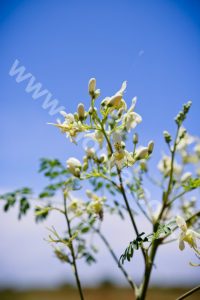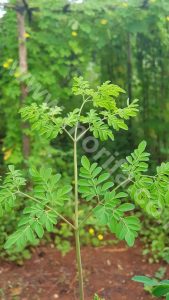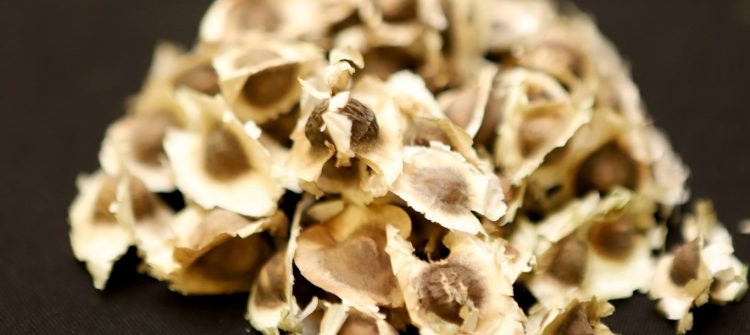The Spread of Moringa Oleifera Oil
Moringa Oleifera Oil comes from Moringa plantation. In Indonesia, the Moringa plant is known by various names. The people of Sulawesi call it kero, wori, kelo, or keloro. The Madurese call it maringgih. In Sundanese and Malay it is called kelor. In Aceh it is called murong. In Ternate it is known as kelo. In Sumbawa it is called kawona. Meanwhile, the Minang people know him by his name.
Latin name
Moringa oleifera Lam
Common Names: Indonesia: Kelor, limaran (Java), English: Moringa, ben-oil tree, clarifier tree, drumstick tree. Moringa has many names in various countries, see World Moringa Names.

Classification
Kingdom: Plantae (Plants)
Subkingdom: Tracheobionta (vascular plant)
Super Division: Spermatophyta (Produces seeds)
Division: Magnoliophyta (flowering plants)
Class: Magnoliopsida (dashed two / dicot)
Sub Class: Dilleniidae
Order: Capparales
Family: Moringaceae
Genus: Moringa
Species: Moringa oleifera Lam
General Description
Moringa (Moringa oleifera) grows in the form of a tree, has a long life (perennial) with a height of 7-12 m. Wooden stems (lignosus), erect, dirty white, thin skin, rough surface. Sympodial branches, in the direction of upright or oblique branches, tend to grow straight and elongated. Propagation can be generative (seeds) or vegetative (stem cuttings). It grows in the lowlands and highlands to an altitude of ± 1000 m above sea level, widely planted as a boundary or fence in the yard or field.
Moringa is a plant that can tolerate a variety of environmental conditions, so it is easy to grow even in extreme conditions such as very high temperatures, under shade and can survive in mild snowy areas. Moringa withstands long dry seasons and grows well in areas with annual rainfall ranging from 250 to 1500 mm. Although they prefer dry, sandy loam or loamy soils, they can live in clay-dominated soils.
Moringa propagation can be done by direct seeding method by seed or using stem cuttings. Moringa leaves can be harvested after the plants have grown 1.5 to 2 meters high, which usually takes 3 to 6 months. However, in intensive cultivation aimed at producing leaves, Moringa is maintained at a height of no more than 1 meter. Harvesting is done by plucking the leaf stalks from the branches or by cutting the branches 20 to 40 cm above the ground.

Spread
Moringa is native to the Himalayan foothills of south Asia, from northeast Pakistan (33 ° N, 73 ° E), north of West Bengal in India and northeast Bangladesh where it is often found at 1,400 m above sea level, on alluvial soils. new or near a stream. (NASIR, E .; ALI, S. I. (eds.), 1972).
Moringa is cultivated and has adapted well beyond its native reach, including throughout South Asia, and in many countries of Southeast Asia, the Arabian Peninsula, tropical Africa, Central America, the Caribbean and tropical South America. Moringa is widespread and has naturalized in other parts of Pakistan, India, and Nepal, as well as in Afghanistan, Bangladesh, Sri Lanka, Southeast Asia, West Asia, the Arabian Peninsula, East and West Africa, along the West Indies and south Florida, in Central and South America from Mexico to Peru, as well as in Brazil and Paraguay (JAMA, B .; NAIR, PKR; KURIRA, PW, 1989).
Most of it grows wild, but as information about its benefits and properties spread, Moringa began to be cultivated for edible pods, leaves, flowers, roots and seeds for oil, and is widely used in traditional medicine throughout the countries where this plant is grown well. The seeds are now used to make our most famous Moringa Oleifera Oil.
For your inquiry about moringa oil/moringa powder :
Contact us :
E-mail: [email protected]
Phone: +6221-2903 4428
Fax: +6221-2903 4429
Sales Mobile/Whatsapp: +62813 8063 7778
Read more :

